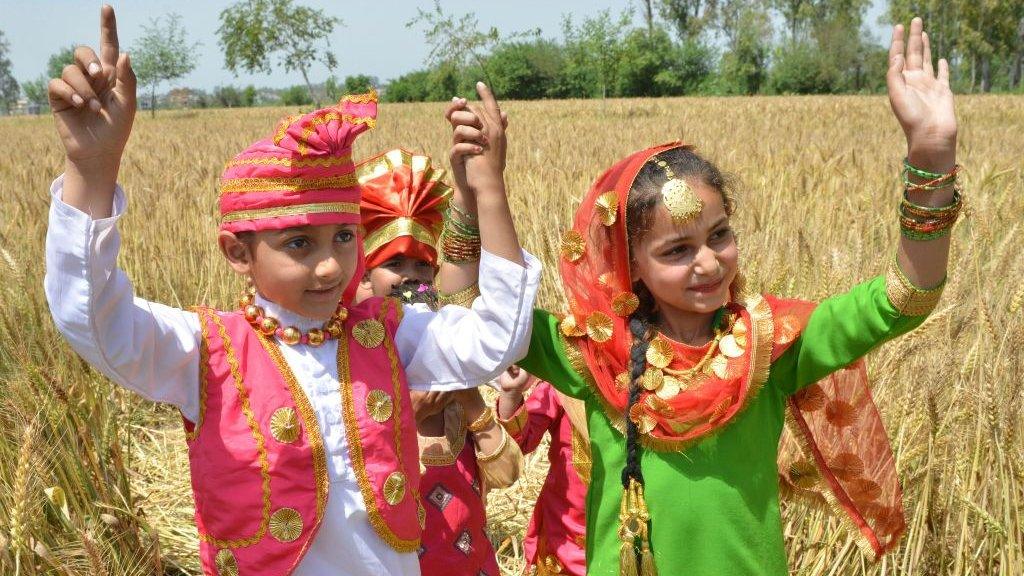What is the story of Passover?
- Published
Celebrating the Jewish festival of Passover
Jewish people all over the world will be celebrating the festival of Passover.
It is one of the most important dates in the Jewish calendar and 2025's festival falls from Saturday evening April 12 until Sunday April 20.
At Passover, Jewish people remember a story from a very long time ago.
They celebrate with family and special food is eaten to remember the story.
You can read about the story in the Book of Exodus, Chapter 12 in the Hebrew Bible called the Torah.
What is the story of Passover?
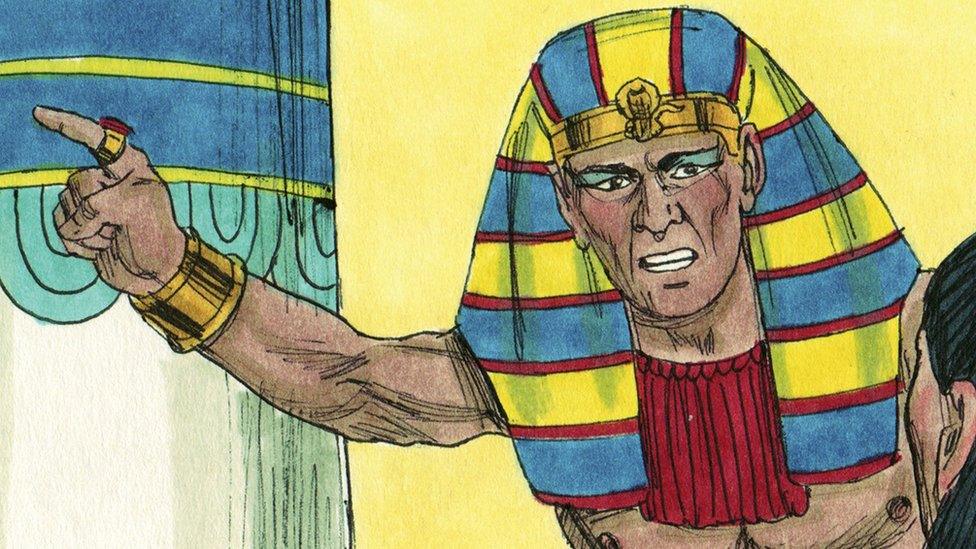
Pharaoh would not let the Jewish people free from slavery
Over 3,000 years ago, a group of Jewish people called the Israelites were being kept in slavery by the ruler of Egypt called Pharaoh.
A man called Moses went to see Pharaoh many times to ask him to let them go, but Pharaoh refused.
Moses told him that if he did not release them, God would make plagues happen to the Egyptians. But Pharaoh did not listen, so the plagues came.
These ten plagues included the River Nile turning to blood, frogs covering the land, insect infestations, animals dying, the Egyptians getting skin diseases, complete darkness for three days and the first-born child in Egyptian families being killed by the angel of death.
Pesach is Passover in Hebrew, which is spoken in many Jewish communities around the world.
God is said to have told Moses to tell the Israelites to paint lamb's blood on their doorposts.
This way, the angel would know that Jewish people lived there. It would pass over that house and not kill the first-born child.
This is where the name Passover comes from.
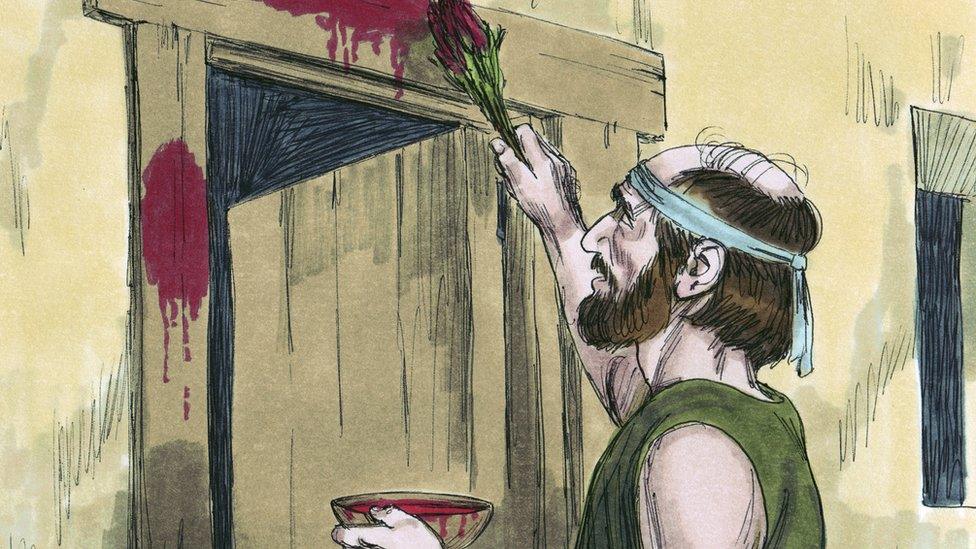
The Israelites were told that if they painted their doorposts with lamb's blood, then their first-born child would not be killed by the angel
For the last plague, even Pharaoh's own son was killed. He summoned Moses and told him to take the Israelites out of Egypt immediately.
Finally, after more than 200 years of slavery, the Jewish people were free.
How is it celebrated?
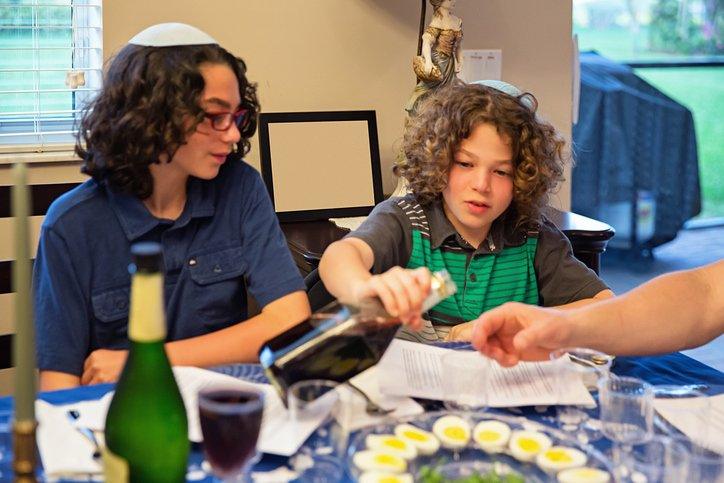
At the beginning of Passover in the evening, family and friends will get together for a meal
For Jewish people, Passover is a big celebration of freedom and life and the Passover celebrations last for eight days.
People clean their houses very carefully, to make sure they get rid of any crumbs of chametz.
These are crumbs from food that has been allowed to rise as they include substances like yeast, and includes normal bread - Jewish people aren't allowed to eat things like this during Passover.
This is because the Israelites had to leave Egypt so quickly that they did not have time to let their bread rise, so food products that have risen are forbidden during Passover.
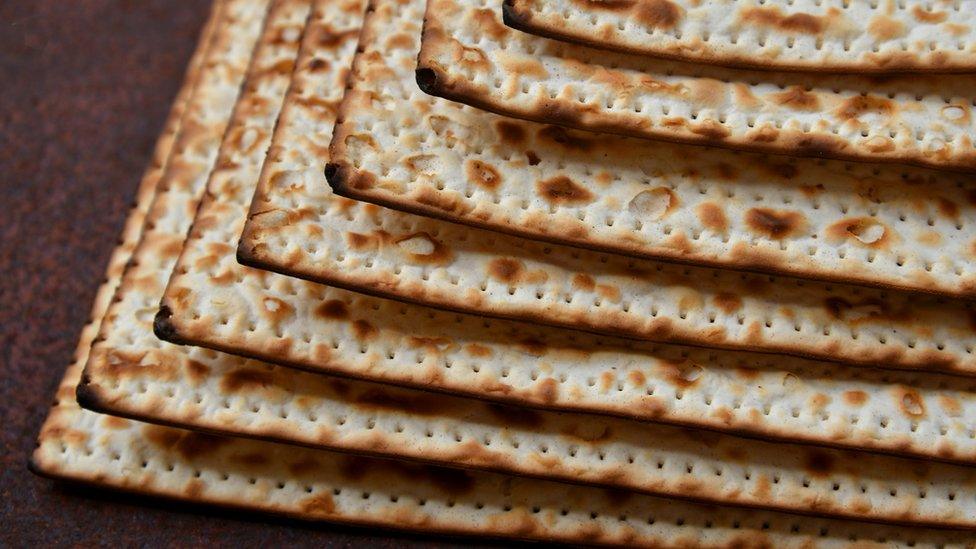
A special type of bread that hasn't been allowed to rise, called Matzah, is eaten during Passover
At the beginning of Passover in the evening, family and friends will get together for a meal and a special service called a Seder.
This year the first Seder will be on Saturday April 12 after nightfall, and the second Seder will be on Sunday April 13 after nightfall.
There is a special Seder plate which has certain things on it:
A lamb bone - This symbolises the sacrifice and blood from the lamb used on the doorposts
A roasted egg - This is a symbol of sacrifice, but also of the Israelites' determination when they were going through such a difficult time, as the cooked egg is hard
A green vegetable to dip in salt water - The green vegetable is a reference to new life, while the salt water symbolises the Israelite slaves' tears
Bitter herbs, often horseradish - This symbolises the bitter suffering that the Israelites had to go through
Charoset (a paste of chopped apples, walnuts and wine) - This is a symbol of the material used by the Israelites to make bricks while they were working as slaves
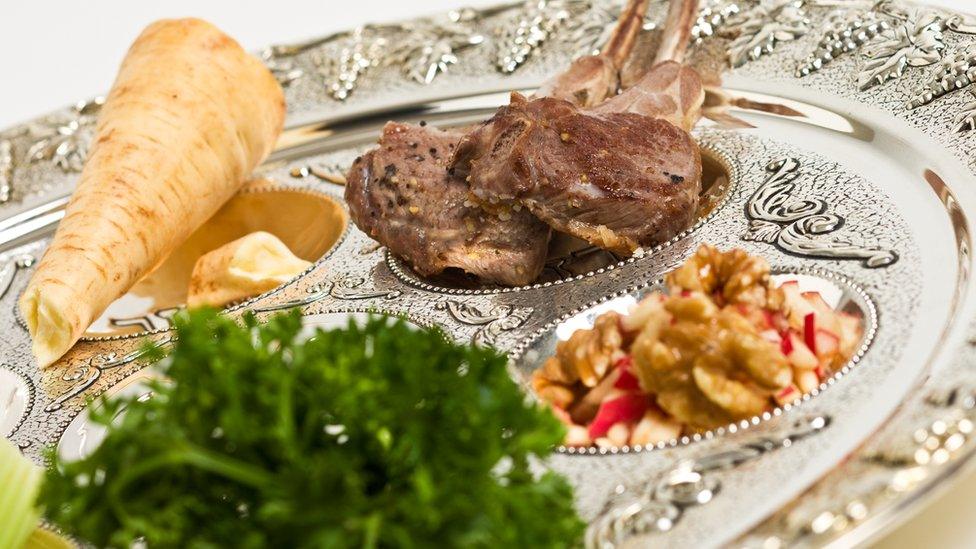
The Seder plate is laid out in a special order, with each food having a particular meaning
As Jewish people cannot eat bread that has risen, they eat a special type of flat bread which hasn't risen (known as unleavened bread) called Matzah.
During the meal, the door is also left open for the prophet Elijah, who is an important religious figure, as it is believed he will come to announce the coming of the Messiah.
Families also read the Haggadah - a book that tells the Passover story - with songs and blessings.
- Published15 September 2023
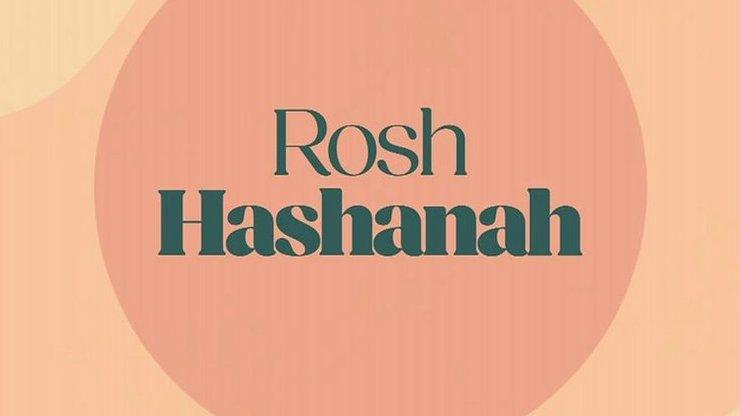
- Published14 April 2023
